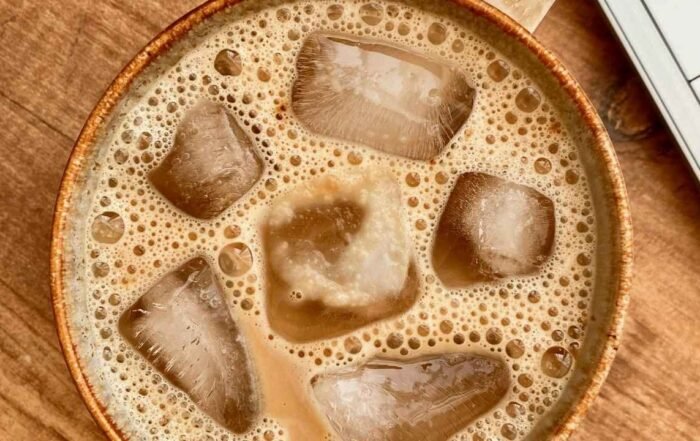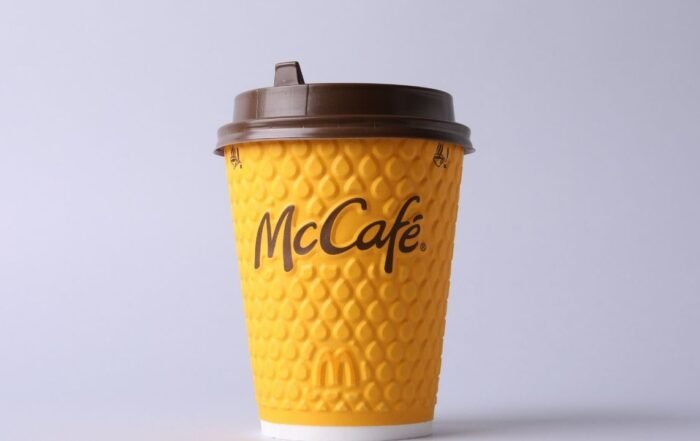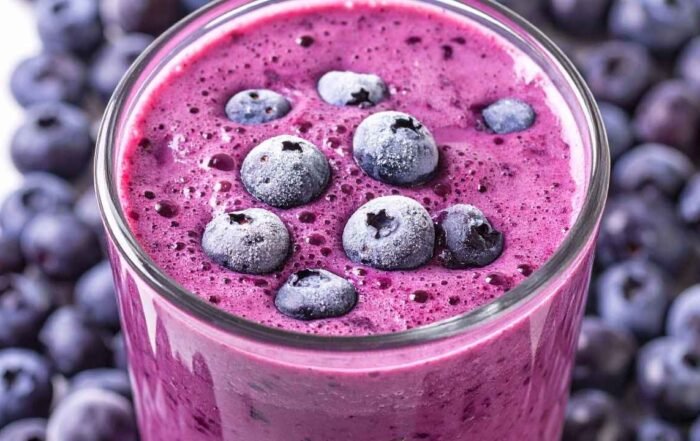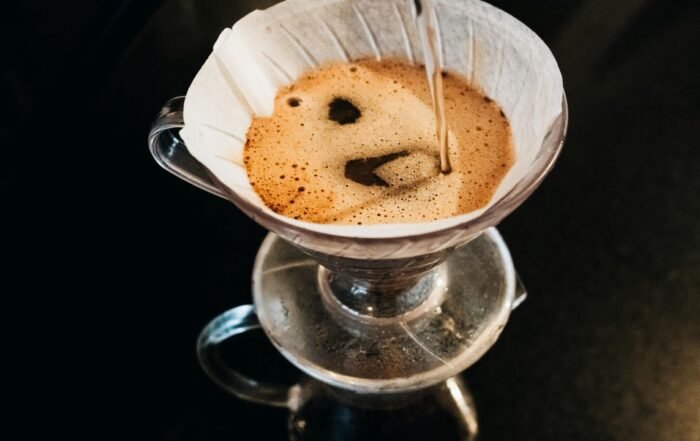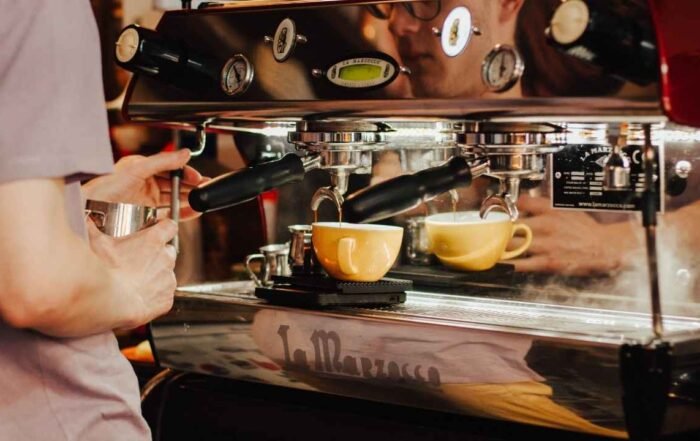In this Article
- How to Brew Espresso at Home
- How to Brew Espresso in a French Press
- How to Brew Espresso in a Moka Pot
- How to Brew Espresso in a Keurig
- How Espresso Is Different from Regular Coffee
- The Four M’s of Espresso: Macinazione, Miscela, Macchina, and Mano
- Some More Espresso Recipes
- Final Tips to Improve Your Home Espresso Game
- Frequently Asked Questions
- Leave A Comment Cancel reply
- Related Posts

Brewing espresso can initially seem intimidating, but once you understand the basics it turns into a delightful daily routine. Become comfortable with the variables affecting your shot: grind size, water temperature, timing, and pressure. Consider it like learning to cook: first, you follow recipes precisely; then, over time you change based on your own taste preferences.
What Makes Espresso Unique
Pressure sets espresso apart from other coffee-brewing techniques. Though drip coffee depends on gravity and French press employs steeping, espresso pushes about 9 bars of pressure of hot water across finely ground coffee. This generates that unique rich, thick, syrupy texture and intense flavor profile you can’t get any other way.
How to Brew Espresso at Home
| Prep Time | Brewing Time | Total | Serving |
| 3 minutes | 2 minutes | 5 minutes | 1 shot |
Basic Gear You’ll Need
Essential Equipment:
- Espresso machine (manual, semi-automatic, or automatic)
- Coffee grinder (burr grinder preferred)
- Portafilter and basket
- Tamper (58mm for most machines)
- Digital scale
- Timer
- Espresso cups (2-3 oz capacity)
Key Ingredients:
- Fresh coffee beans (medium-dark to dark roast) – 18-20g
- Filtered water 2 oz (60ml)
- Optional: sugar or sweetener

Step-by-Step Brewing Process
1. Prepare Your Coffee Grounds
- Weigh out 18-20 grams of fresh coffee beans (roasted within 2-4 weeks)
- Grind the beans to a fine consistency, similar to powdered sugar
- The grind should feel slightly gritty between your fingers, not powdery
- Use the coffee immediately after grinding for best results
2. Dose and Distribute the Coffee
- Place the ground coffee into your portafilter basket
- Level the grounds by gently tapping the sides of the portafilter
- Use your finger to distribute the coffee evenly across the basket surface
- Ensure there are no air pockets or uneven areas
3. Tamp the Coffee Grounds
- Place the portafilter on a flat, stable surface
- Hold the tamper with a straight wrist and apply 30 pounds of downward pressure
- Press straight down and give a slight twist to polish the surface
- The coffee bed should be completely level and smooth
4. Heat Your Espresso Machine
- Turn on your espresso machine and allow it to heat up (10-15 minutes)
- Run a blank shot through the group head to ensure proper temperature
- The ideal brewing temperature is between 190-196°F (88-91°C)
- Place your espresso cup under the portafilter spout
5. Extract the Espresso Shot
- Lock the portafilter firmly into the group head
- Start your timer and begin the extraction immediately
- The first drops should appear within 3-5 seconds
- Aim for a total extraction time of 25-30 seconds
- Stop the shot when you have 2 oz (60ml) of liquid
6. Evaluate Your Shot
- Look for a golden-brown crema that covers the entire surface
- The crema should be thick enough to support a spoonful of sugar briefly
- Taste the espresso – it should be balanced with sweetness, acidity, and bitterness
- The texture should be syrupy and full-bodied

How to Brew Espresso in a French Press
Although a French press is not traditional espresso, it may produce a dense, robust coffee that resembles the intensity of espresso. This technique extracts maximum flavor from your beans by immersion brewing with a longer steeping time and fine grind, yielding a rich, full-bodied coffee concentrate ideally suitable for espresso-styled beverages.
Brewing Instructions and Tips
- Use a 1:4 coffee-to-water ratio (30g coffee to 120ml hot water) for maximum concentration and strength
- Grind your coffee beans to a fine consistency, finer than typical French press but coarser than espresso grind
- Heat water to 200°F and pour over grounds, stirring gently to ensure even saturation of all coffee particles
- Steep for exactly 4 minutes, then press the plunger down slowly and steadily to separate grounds from liquid
- Serve immediately in small portions like traditional espresso shots to prevent over-extraction and bitterness
How to Brew Espresso in a Moka Pot
Invented in Italy, the Moka pot forces steam-pressurized water through finely ground coffee to generate a strong, concentrated coffee. Though technically not espresso because of reduced pressure, it makes a rich, strong coffee that has comparable features and is a great home brewing alternative to espresso.
Step-by-Step Brewing Method
- Fill the bottom chamber with filtered water up to the safety valve, ensuring proper pressure buildup during brewing
- Insert the metal filter basket and fill with medium-fine ground coffee, leveling without tamping to allow proper water flow
- Screw the top and bottom chambers together tightly, ensuring a proper seal to prevent steam leakage during brewing
- Place on medium heat and listen for the distinctive gurgling sound that indicates the brewing process is nearly complete
- Remove from heat immediately when gurgling begins to prevent over-extraction, then serve the concentrated coffee in small espresso cups
How to Brew Espresso in a Keurig
Keurig machines can’t produce true espresso due to insufficient pressure, but they can brew strong, concentrated coffee using espresso K-cups or the strongest settings available. This method offers convenience and consistency for those wanting espresso-style coffee without investing in expensive equipment or complex brewing techniques.
Tips for a Stronger Keurig Espresso
- Select the smallest cup size setting (4 oz or less) to maximize coffee concentration and create a more intense flavor profile
- Use dark roast espresso K-cups or extra bold varieties specifically designed for stronger extraction and richer taste
- Run the brewing cycle twice using the same K-cup to increase caffeine content and create a more concentrated coffee extract
- Preheat your cup with hot water before brewing to maintain optimal serving temperature and prevent heat loss
- Consider using the “strong” or “bold” button if your Keurig model has this feature to extend extraction time

How Espresso Is Different from Regular Coffee
| Aspect | Espresso | Regular Coffee |
| Brewing Method | High Pressure extraction | Drip, pour-over, or immersion |
| Grind Size | Very fine powder | Medium to coarse |
| Brewing Time | 25-30 seconds | 4-6 minutes |
| Serving Size | 1-2 oz shot | 8-12 oz cup |
| Concentration | Highly concentrated | Diluted strength |
| Crema | Golden foam layer | No crema |
The Four M’s of Espresso: Macinazione, Miscela, Macchina, and Mano
Four main components define shot quality under traditional Italian espresso culture. These “Four M’s” help one to understand what makes good espresso. Though mastering every component takes time, knowing their significance helps you direct your efforts for improvement properly.
Macinazione | The Grind
Your grind size controls extraction speed and pressure buildup. Too coarse and water flows too quickly, creating sour, under-extracted shots. Too fine and you’ll get over-extracted, bitter coffee.
Miscela | The Blend
This refers to your coffee beans – their quality, freshness, and roast level. Great espresso starts with quality beans roasted within two weeks of brewing.
Macchina | The Machine
Your espresso machine must maintain consistent temperature and pressure. Even budget machines can work if they provide stability rather than fancy features you don’t need.
Mano | The Skill of the Barista
This encompasses your technique – dosing, distribution, tamping, and timing. Good technique develops through practice and attention to detail, not expensive equipment.
Some More Espresso Recipes
Final Tips to Improve Your Home Espresso Game
When you’re learning, consistency defeats perfection. Before chasing that perfect shot, concentrate on building reliable practices. Maintain thorough records on what succeeds and what falls short: grind settings, timing, and bean behavior variances. Taste everything you create most importantly and become able to recognize what you like and dislike about every shot.
Frequently Asked Questions
How long does it take to learn how to brew espresso properly?
Most people can pull decent shots within 2-3 weeks of daily practice. However, developing consistent technique and understanding how to adjust variables takes several months of regular brewing.
What’s the biggest mistake beginners make when brewing espresso?
Changing too many variables at once. When a shot tastes bad, beginners often adjust grind size, timing, and dose simultaneously, making it impossible to identify what actually needs fixing.
Can I use pre-ground coffee for espresso?
While possible, pre-ground coffee loses freshness quickly and rarely provides the consistency needed for good espresso. Investing in a decent grinder will improve your shots more than any other single upgrade.




